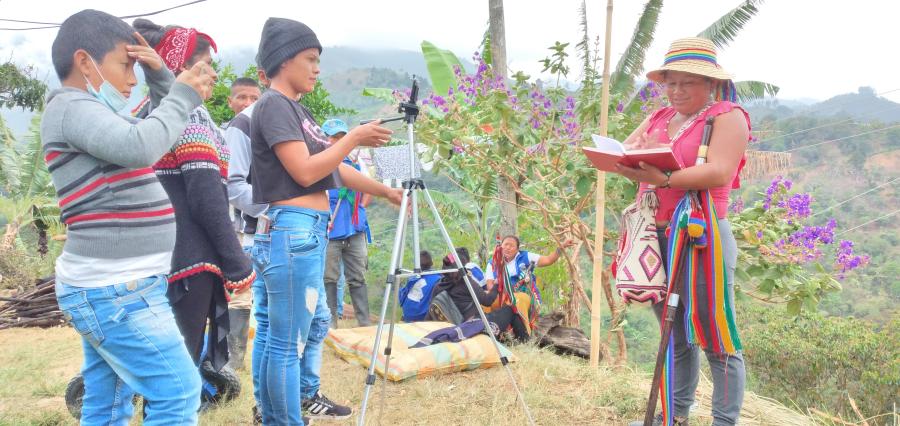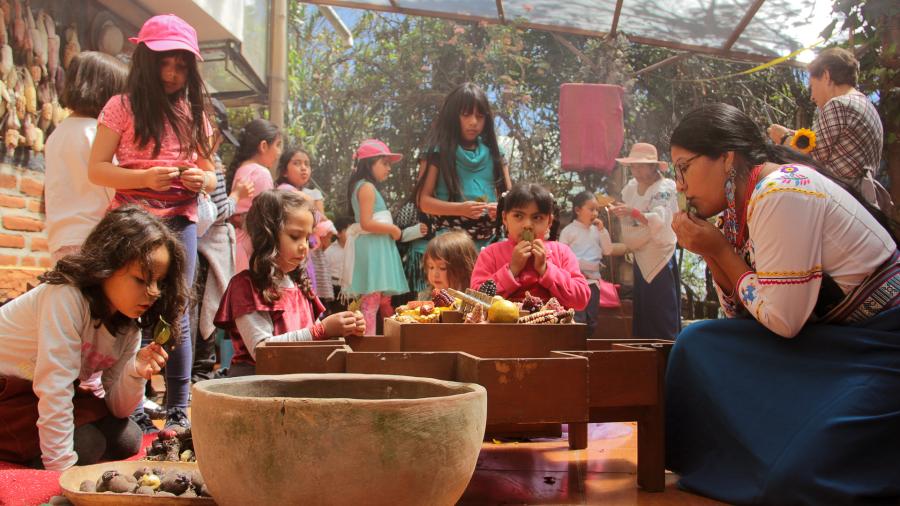If Russell Means had been the producer of Disney’s Pocahontas rather than a voice-over actor, would the final product be different? If Wes Studi had been the director or editor of The New World, would the final product be different? If director Phillip Noyce had not faithfully adapted his movie Rabbit Proof Fence from aboriginal author Doris Pilkington-Garimara’s book Follow the Rabbit Proof Fence and consulted with the author at all stages of the project, would the final product be different?
The answer to all these questions is yes. Russell Means would have insisted on accuracy rather than a love story that perpetuated myths and stereotypes of native culture to impressionable children. Means probably would have opted against telling the true story of Pocahantas in a children’s animated movie, though—he wouldn’t want children to cry. Wes Studi would have made the story of the lands invasion by the British accurate and realistic, and perhaps the film would have done better at the box office. After all, international theatergoers flocked to see Noyce’s Rabbit Proof Fence, which told the truth and whitewashes nothing about the Stolen Generation of Aboriginal Australian children taken from their families to be brutally shaped into good servants for white households. As a result of its efforts to tell the truth, Rabbit Proof Fence is a classic film.
As often happens with important films, it was a difficult journey. Rabbit Proof Fence faced enormous pressure from conservative groups and individuals, such as Piers Akerman, a columnist for Sydney’s Daily Telegraph newspaper who claimed the movie “played hard and fast with the truth.” Another columnist, Andrew Bolt, complained that the project was funded by the Australian government for A$1.8 million, and therefore the taxpayers’ money was funding untruths and exaggerations. Australian government minister Eric Abetz announced that he would use federal funds to sponsor a leaflet campaign attacking the independent production. He was most upset that the independent film was going to be shown nationally and that the poster promoting the film overseas had the tagline: “What if the government kidnapped your daughter? It happened every week in Australia from 1905 to 1971.” It seemed that Australia wasn’t really able to handle the truth of what happened internally and became really terrified at the prospect of international audiences seeing their dirty laundry. Minister Abetz insisted that the producers apologize to the government, to which director Philip Noyce responded: “They’re asking me to apologize for the poster? Maybe they could apologize to our indigenous citizens!”
Despite the desire of informed people or people who want to see accurate portrayals of history regarding the colonization of indigenous cultures in North America, there seems to be a lack of material. Unlike Australia and Canada, independent filmmakers in the United States must go it on their own, by and large, raising their own money. There is a federal channel—grants supplied by the National Endowment for the Humanities and the National Endowment for the Arts—but these organizations are girded by academic nepotism and rarely fund anything that challenges the status quo. One can almost hear the bellow of conservatives that would result if a government-funded film presented the documented facts that the extermination of the natives in New England was a goal of the colonial governments and not an unfortunate side-effect of colonization. Independent native filmmakers in the United States certainly couldn’t receive federal or institutional funding to start the process, never mind make a poster saying, “What if the government destroyed your land, sold your father into slavery, and told you that you were less than human? It happened every week in New England from 1630 to still counting . . . “
The revisionist history of colonial invasion has been seen ad nauseam in films, even in more contemporary ones like The New World. Even though it is widely acknowledged that John Smith and Pocahantas were never in love and the story of Virginia colonization is compelling enough without this element, it is an element too difficult for mainstream media to abandon. When producer Sarah Green was called to task on this issue, she said:
‘’We chose to go with that powerful myth of this great love affair that couldn’t be.’’
The New World did not do well at the box office. Perhaps contemporary audiences are ready for more balanced and real stories to be told. Movies that have historically tried to address that “something bad happened” and that even go the extra mile to use real native actors, such as Little Big Man and Dances With Wolves, have always had a sympathetic white character for audiences to relate to and thereby not feel so bad about their identity. This is not so in Rabbit Proof Fence, where A.O. Neville, western Australia’s “protector of Aborigines,” played by Kenneth Branagh, is not at all a sympathetic character. His hunt for the escaped children is as all-consuming as his quest to destroy indigenous Aboriginal culture. Yet, the film still touched non-indigenous audiences in Australia and beyond. Reviews of the film in the United States and Canada drew comparisons to these countries’ colonial past and the similar experiences of their native people with dispossession, removal, and confinement on reserves, missions, and government schools. The ground zero that is the East Coast of North America, where the English similarly colonized a people, has never been adequately presented. The myths of Thanksgiving and colonial New England prevail. The rabbit-proof fence of Australia was built to contain a devouring introduced animal; in New England the equivalent is the colonial split rail fence or stone wall. Imported English cattle and swine devoured the original landscape, ruining native planting sites and food storage areas. While the public has accepted stories and films of inter-colonial cruelty, for example, The Crucible and The Scarlet Letter, it has yet to see stories based in documented facts that the natives suffered under the laws and hands of these same Puritans. Perhaps this lack of films or stories on this subject is due to the fact that non-native filmmakers have yet to find that sympathetic white character.
As native filmmakers, we do not wish to wait for someone to create a sympathetic English character to tell the story of the Northeast natives. We feel that it is high time that native people tell this story themselves. To that end, we are working on a documentary film about the events leading up to and surrounding what is known as King Philip’s War. We wish to show how this conflict set the stage for the government’s subsequent treatment of all indigenous cultures in North America. The war blamed on Metacomet or King Philip and the allied native nations was in fact started by the colonists. The exact sequence of strategic moves to get native people into this position reveals English intent in the 16th and 17th centuries. The English forced their laws on the natives, reduced their lands, ruined the environment, destroyed their leaders, and tricked the people into servitude, slavery, and subjugation. We feel that King Philip’s War is a good choice for outlining English colonization because it was a clear turning point, after which English manipulation, territorial encroachment, and slavery became the standard policy in the whole Northeast region. It is important for us to depict the fact that the native nations were the superiors of the English early on, and that we went from that position almost directly to a position of enslavement. There was no progression from autonomy to equality as is often portrayed by the English. Equality was, and still is, earnestly fought for and sought after in a variety of ways by traditional and converted natives.
The public needs to know this information and we need to produce it freely, without stricture to whitewash, with liberty to incorporate native stories and to honor those that accepted history has wanted us to forget. Indigenous people have been rendered mute for a very long time, and this documentary is a small step in the necessary process of giving ourselves and our ancestors voices.
Ann Tweedy and Elizabeth Perry are filmmakers in western Massachusetts.



